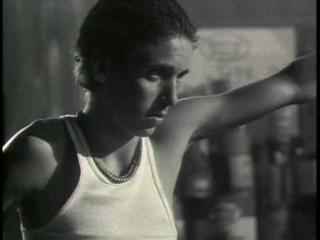
These are not the same sort of people we saw in verse one and two.

And they work in high rises and vacation at resorts, taking plane rides to places they probably don't see, skipping over all the people on the ground on the way to get there. "There's people and more people" and "what do they know"? Who are these people? There are a lot of them. But here, we get the speaker's attitude, still in that midwestern voice. There is no "I" in the song, and for the first two verses, we get little sense of a speaker as a character, just an observer. In the third verse, we have this commentary. 'Cause the simple man baby pays for thrills, the bills,Īnd the pills that killIn the first two verses, we have snapshots of individual characters - people we can picture in our minds. So the tone is a little complicated.Īnd then we have the third verse, which is different than the first two: Well there's people and more people But as much as pink suggests sentimentalized kitsch, it also suggests a touch of color. It is the American dream, but it's a diminished American dream, a plastic, cheap, kitsch American dream. There is some irony, some deflation in it. Little pink houses for you and meSo, these snapshots, these little anecdotes: "Ain't that America"? Bundled up here are the "for you and me" from Woody Guthrie's "This Land is Your Land," and the patriotic "home of the free." I think the "somethin' to see" line is very midwestern, from the part of America where vacations are road trips, consisting of roadside attractions, diversions, "somethin' to see." And then there's what it all adds up to: "Little pink houses for you and me." What is the attitude of that line? That's the key to the song. Here's the chorus: Oh but ain't that America for you and me So, a lot turns on the chorus of the song, and the commentary in the third verse.

The song is a glimpse into these small-town American lives, whittled down to a verse in a three-minute pop song. So we have these two snapshots of people. So he puts a positive spin on it: "Lord this must be my destination." Just a certain nostalgia ("those old crazy dreams") and the fact that he's stayed put - perhaps he thought he'd break out of his small town once and yet he didn't, for whatever reason. What do we make of this "young man in a T-shirt"? On the one hand, he's got "greasy hair" and a "greasy smile," suggesting both that he is probably of working class background (grease here being both a hair style and also a suggestion of "grease monkey" or gas engines), and possibly that there's something "greasy," slippery, or self-serving about him.

Just kinda came and wentIf the first verse fits easily into a common social commentary (the blight of black America), the second does not. He says, "Lord this must be my destination."īut just like everything else those old crazy dreams I'm going to skip the chorus for a second and move to the second verse: There's a young man in a T-shirt He's got a wife and a house and he remembers when they were young and in love. We can guess that they've gotten the short end of the stick, in that there's an "interstate runnin' through front yard" and yet the man "thinks he's got it so good." He's not wallowing, even though by the simple fact that he's black, we intuit a larger social commentary about race and society and the way it must affect his situation - in essence, why an interstate would have been built through his neighborhood and not a more affluent neighborhood. "Hey darlin', I can remember when you could stop a clock."We're presented with this image of a couple, an older couple, a black couple. You know he thinks that he's got it so goodĪnd there's a woman in the kitchen cleanin' up the evenin' slop He's got an interstate runnin' through his front yard Here's the first verse: There's a black man with a black cat livin' in a black neighborhood Instead, it uses a few snapshots to suggest a larger commentary. "Pink Houses" is a song built on a narrative impulse, but it is not really a "story song," in that it doesn't tell one simple story. In it, he talked about his folk influences, and the "four songs" that he wrote, over and over. I heard Terry Gross's interview with Mellencamp on Fresh Air last night. He was orginally packaged as "John Cougar" - a sort of market-driven caricature - but as his success allowed him some independence, he the name on the albums to John Cougar Mellencamp and then to John Mellencamp. He came up in the music business at an interesting time, in the early days of MTV. His songs are not quite as inventive or fine-crafted as a Bob Dylan or a Bruce Springsteen, but they are simple, accessible, and come grounded in a small-town American heartland sensibility. As a songwriter, Mellencamp has kept it simple throughout his career. The lyrics of "Pink Houses" by John Mellencamp ( listen to the song on Mellencamp's Last.fm page) are a social commentary, packed carefully into the confines of a three-minute pop song.


 0 kommentar(er)
0 kommentar(er)
